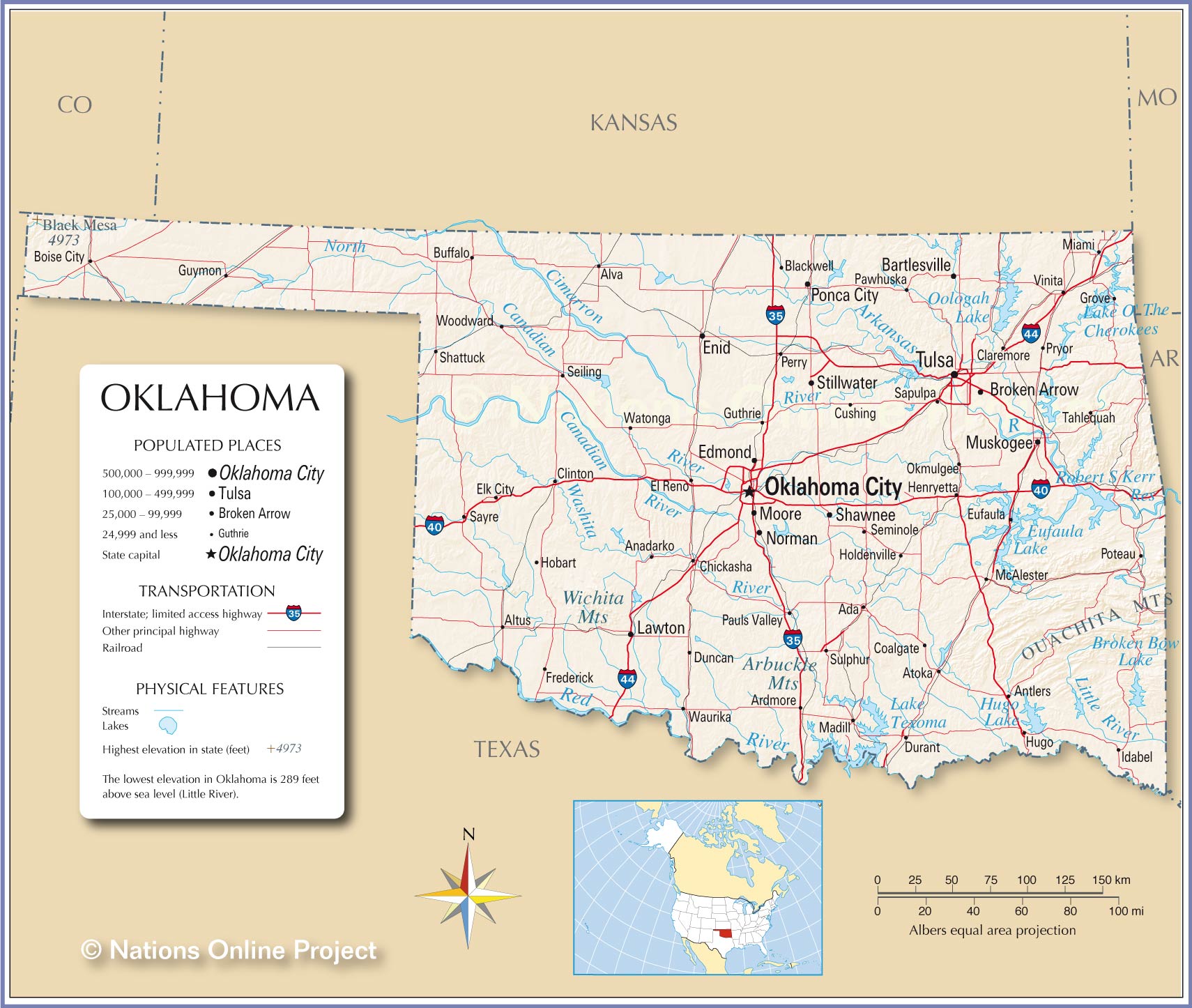Summary
In this lesson, students examine a map of Oklahoma and complete a scavenger hunt to find objects on the map. Students learn important map-related vocabulary and extend their learning by creating a map of the classroom. Learning is assessed when students answer a reflection question.
Essential Question(s)
What is the purpose of a map?
Snapshot
Engage
Examine a map of Oklahoma using the strategy I Notice, I Wonder.
Explore
Complete a scavenger hunt using a map of Oklahoma.
Explain
Define vocabulary terms using a Vocabulary Foldable Map.
Extend
Create a map of the classroom.
Evaluate
Reflect on the lesson content by using the strategy What Did I Learn Today?
Materials
Lesson Slides (attached)
Map of Oklahoma (attached, one per pair of students)
Vocabulary Foldable Map (attached, one per student)
Blank copy paper (one per student)
Notebook paper (one per student)
Sticky Notes (several per student)
Colored pencils or crayons
Scissors
Glue or glue sticks
Engage
15 Minute(s)
Use the attached Lesson Slides to guide the lesson. Place students in pairs and pass out the attached JAVITS OK Map-Map It Out handout to each pair of students. Display slide 3 to introduce the Essential Question, "What is the purpose of a map?" and slide 4 that introduces the Lesson Objective: "Explain the elements of a map."
Show slide 5. Introduce students to the I Notice, I Wonder strategy. Explain to students that, as they view the map on slide 6, they should think about two things they notice and two things they wonder about the map.
Move to slide 6. Provide time for students to examine the map. Ask students to talk with their partners about what they notice and wonder. Ask for a few volunteers to share their thoughts about the map.
Explore
20 Minute(s)
Move to slide 7. Have students find the items listed in the Map Scavenger Hunt by using the map of Oklahoma handout.
Provide time for students to work through each item with a partner.
Instruct them to label and mark their answers on the map with sticky notes.
Ask for volunteers to share with the class information they have located on the map, correcting misconceptions as needed.
Explain
30 Minute(s)
Pass out the attached Vocabulary Foldable handout to each student. Use slide 8 and slide 9 to provide the vocabulary definitions for students, or if possible, let students look up the definitions in a social studies textbook or online using personal devices.
Have students go to slide 10 for instructions to plan activity. After students have defined the vocabulary words individually, have them look at the Map of Oklahoma again, and find each of the vocabulary words on the map.
Use this time to further explain the importance of the key, scale, and compass rose. Explain to students that many compass roses do not list all four cardinal directions, only north.
Teach students an acronym to remember the cardinal directions, such as, "Never Eat Soggy Watermelon." Explain to students that intermediate directions go between the cardinal directions. Have students create their own compass rose with cardinal and intermediate directions on the Vocabulary Foldable.
Extend
30 Minute(s)
Move to slide 10. Pass out a piece of blank copy paper to each student. Ask students to create a map of the classroom and include the information listed on the slide. Consider having students create a rough copy on a piece of notebook paper before creating their final map on copy paper.
Encourage students to use colored pencils or crayons. Remind students to use symbols to represent classroom objects and to list the symbols in the key.
Consider creating a scale for the map as a class by designating the distance as ¼ inch = 1 foot. Provide time for students to create a map of the classroom individually and then have students compare their maps with a partner.
Evaluate
5 Minute(s)
Display slide 11. Provide each student with a sticky note or use notebook paper. Using the What Did I Learn Today? strategy, ask students to write a short summary of the information they have learned during the lesson. Collect the sticky notes or notebook paper as well as the student-created classroom maps to assess student understanding of the lesson content.
Resources
Collins Dictionary. Definition of "map scale." https://www.collinsdictionary.com/us/submission/12477/%E2%80%9Cmap+scale%E2%80%9D
K20 Center. (n.d.). I Notice, I Wonder. Strategies. https://learn.k20center.ou.edu/strategy/180
K20 Center. (n.d.). What Did I Learn Today? Strategies. https://learn.k20center.ou.edu/strategy/169
Google Earth. (n.d.). https://earth.google.com/web/
Merriam-Webster. (n.d.). Legend Definition & Meaning. https://www.merriam-webster.com/dictionary/legend
Nationsonline.org. (n.d.). Map of the U.S. state of Oklahoma. Nations Online Project. https://www.nationsonline.org/oneworld/map/USA/oklahoma_map.htm
Oklahoma Alliance of Geographic Education (OKAGE). (n.d.). Giant traveling maps. http://okageweb.org/giant-traveling-maps
The Free Dictionary. Farlex. (n.d.). Compass Rose. https://www.thefreedictionary.com/compass+rose


